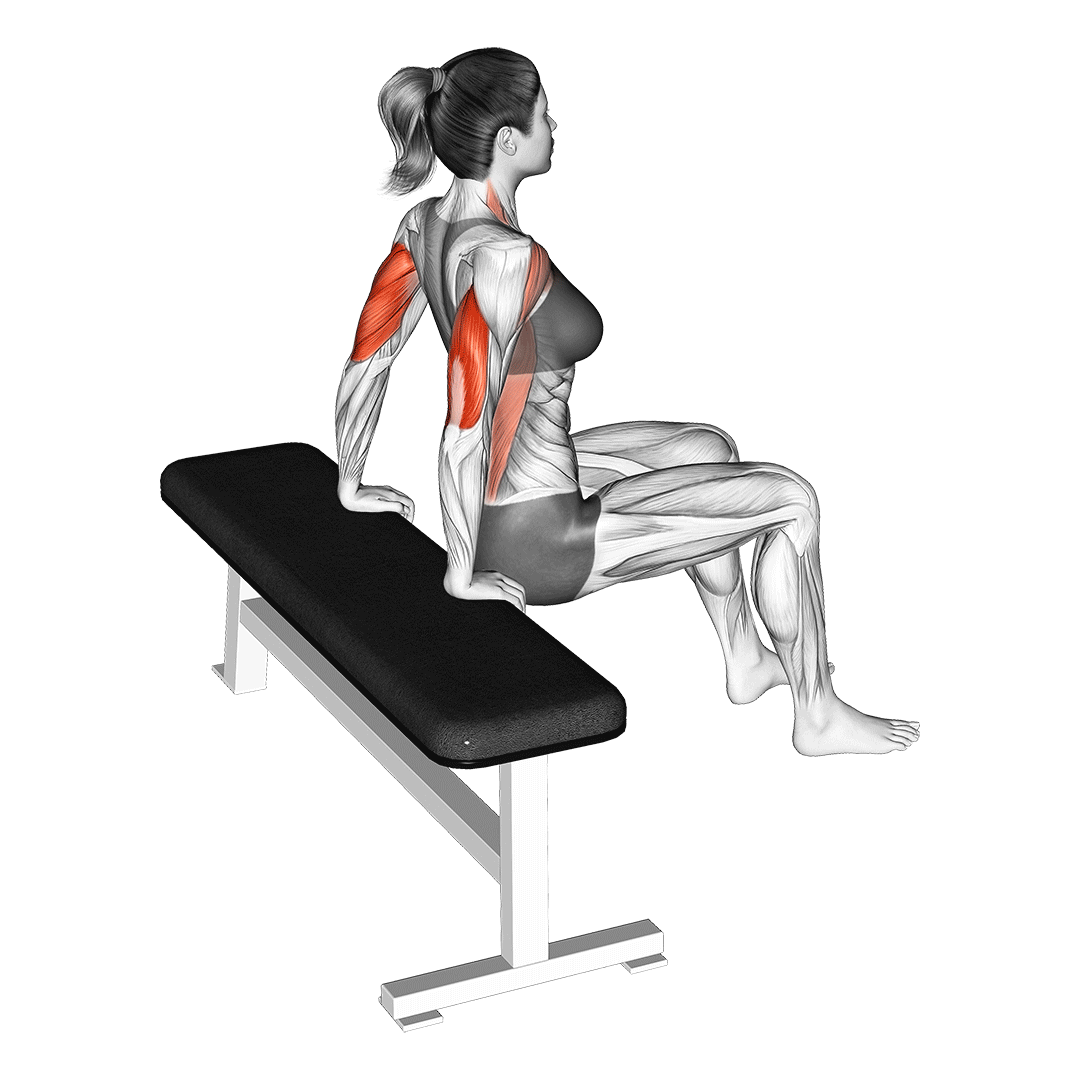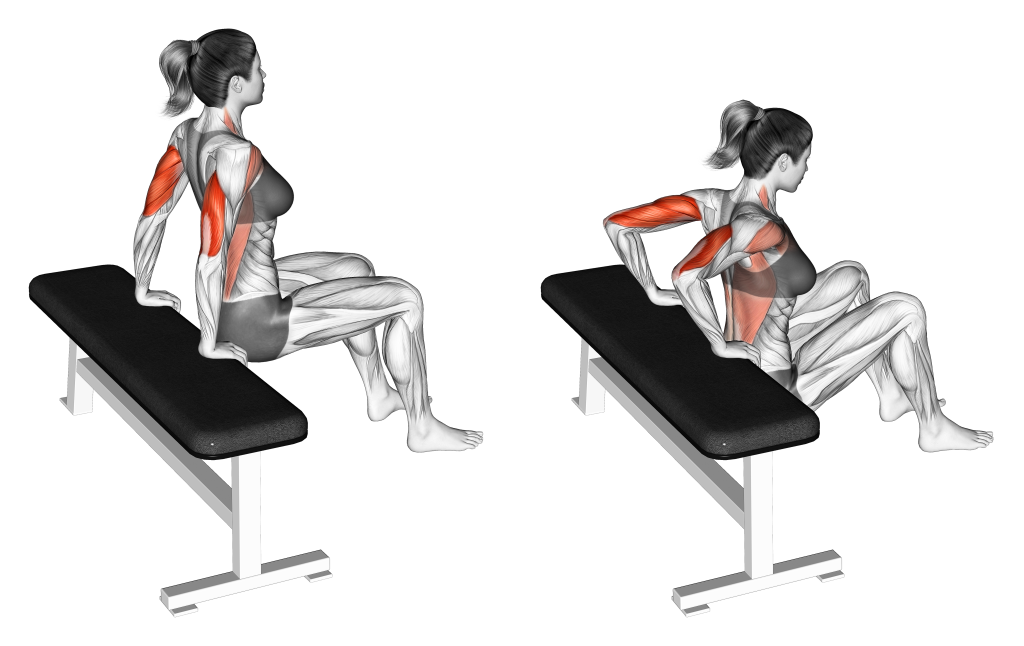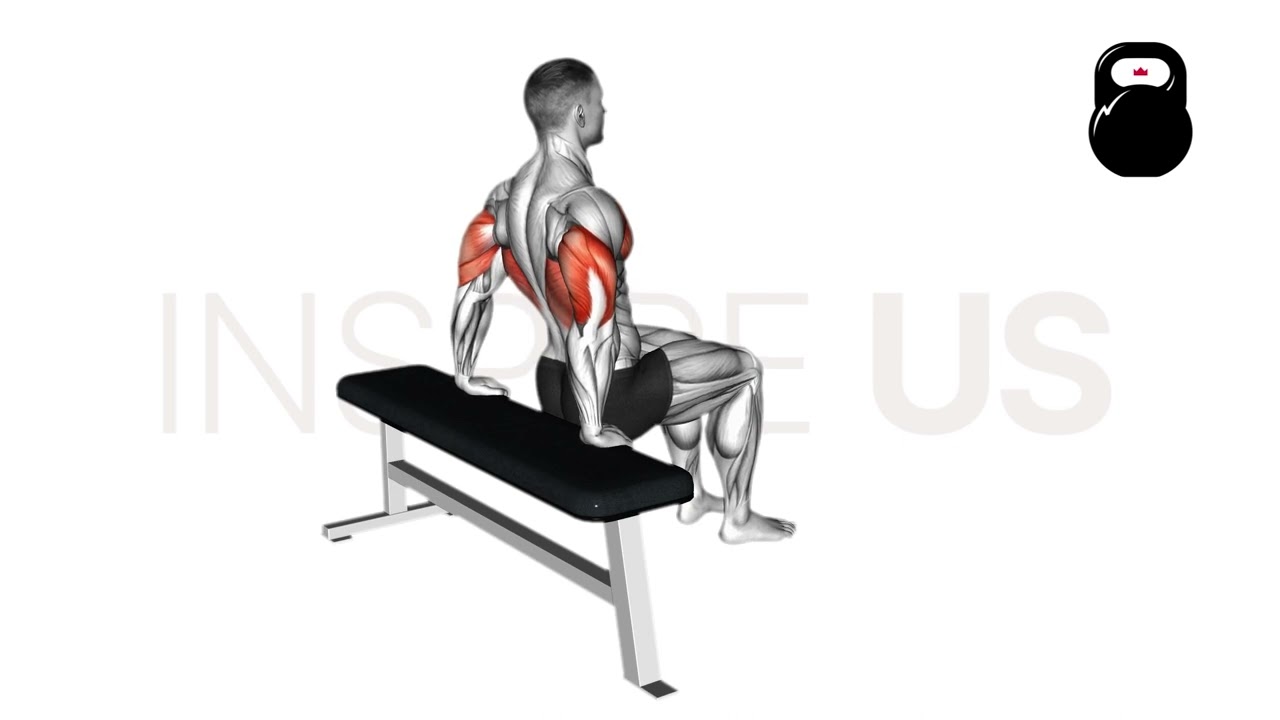Bench Dip Exercise Overview: Muscles Worked and More
Bench dips (also called triceps dips) are a traditionally bodyweight compound movement meant to target the triceps and shoulder muscles with a minimal level of equipment needed.
In practice, they simply involve the lifter suspending their body off the edge of a bench with both hands gripping it for support.
From this stance, the lifter then lowers and raises themselves primarily through flexion/extension of the elbow.
Bench Dips at a Glance
Equipment Requirements
Bench, Weights (Optional)
Main Muscles Targeted
Triceps Brachii, Deltoids
Difficulty
Easy
Sets, Reps, and Load Recommendations
4-6 Sets of 10-18 Repetitions With Bodyweight - OR - 3-5 Sets of 8-12 Repetitions at a Moderate Load
How to Do Bench Dips
- To perform a repetition of the bench dip, the lifter begins by first scooting themselves off the edge of an exercise bench, their heels resting on the floor with the legs loosely extended forwards, as if performing an air-sit.
The palms should be flat behind the body several inches wider than shoulder-width apart, elbows kept straight and close to the back. - Now positioned appropriately, the lifter bends at the elbows and slowly lowers their trunk downwards - ensuring that flexion of the elbow is the main driver of the movement, not the legs.
- Lowering themselves until the arm is bent at a 90 degree angle, the lifter then proceeds to drive through their palms and extend their elbows. This should drive the trunk back upwards into the original starting position.
- When back in the starting position with the elbows once again fully extended, the repetition is considered to be complete.
Additional Tips:
Aim to keep the shoulders neutrally rotated and the scapula slightly retracted for optimal muscular recruitment.
Apart from the triceps, the “burn” of the exercise should be felt along the front of the shoulders and occasionally along the upper chest.
The difficulty of the exercise itself can be modulated through the positioning of the heels. The further out the feet and legs are in relation to the bench, the more of the trunk’s weight is distributed to the triceps - with the opposite also being true for an easier repetition.
Sets and Reps Recommendation:
If performing the exercise unweighted, 4-6 sets of 10-18 repetitions should suffice for novices and intermediates.
However, if using a moderate amount of additional weight, then 3-5 sets of 8-12 repetitions.
What Muscles Do Bench Dips Work?
Bench dips are considered to be a compound movement due to their capacity to recruit multiple muscle groups simultaneously.

While the primary driver of the movement itself is the triceps brachii, the bench dip will also target the anterior (front) head of the deltoids and the pectoralis muscles in a secondary capacity.
Common Bench Dip Mistakes to Avoid
Though the bench dip is suitable for even the most novice of athletes, the following mistakes should be corrected as quickly as possible in order to maximize muscle gain.
Poor Range of Motion
Because it can be quite difficult to actually ascertain when a full ROM has been achieved with the bench dip, one of the most common issues encountered among lifters is an incomplete ROM.
An incomplete range of motion can cause poor muscular development in response to training, and otherwise create greater pressure on the joints of the arms and shoulders.
Apart from achieving a 90 degree bend to the elbows, lifters can also use the sensation of stretching in their shoulder joint as a secondary metric.
Each repetition should involve descending until just shy of any sensation of strain being felt in the shoulders, as this indicates that they’ve reached the limits of their stable mobility. Likewise, the start and end of each repetition should feature full elbow extension.
Flaring the Elbows
To reduce strain on the elbows and shoulders, the elbows should bend backwards, rather than flare out to the sides as the lifter lowers themselves downwards. Not only will doing so reduce the risk of injury, but will also help optimize contraction of the inner triceps brachii head.
Occasionally, lifters may have some difficulty keeping their elbows angled correctly with bench dips. This is most often a result of the trunk being too close to the bench - or otherwise due to poor mobility of the wrists and elbows.
Both issues may be corrected by setting the torso further away from the bench and performing a proper mobility warm-up prior to training.
Using the Legs
Of course, generating force from muscles other than those intended to be trained is considered to be a mistake.

The bench dip is no different in this regard, as the triceps are meant to be the main driver of the entire movement.
Generating force through the legs can largely be avoided by simply keeping the soles of the feet raised, with only the heels touching the ground for support. Keeping the knees locked out may also help prevent accidental contraction of the leg muscles.
Failing to Retract Scapula
To help protect the shoulders from the strain inherent to bench dips, each set should begin with the scapula retracted tightly behind the body. Though it will indeed elevate and depress as the lifter goes through their repetitions, the scapula should nonetheless remain pinched throughout the set.
Consistently winging the scapula or allowing them to disengage may be a sign that the lifter’s hand placement is too wide, or that the feet are set too far from the trunk to maintain proper stability.
Who Should Do Bench Dips?
Bench dips are simple and safe enough to be performed by even novice lifters. When used as a secondary compound movement for greater triceps development, few exercises are as convenient or attack the muscle from as unique an angle.
However, they do present one major disadvantage in that the risk of shoulder impingement and injury can be significant.
Lifters with a history or susceptibility to shoulder joint issues should first speak to a medical professional prior to attempting any variant of dip.
References
1. McKenzie A, Crowley-McHattan Z, Meir R, Whitting J, Volschenk W. Bench, Bar, and Ring Dips: Do Kinematics and Muscle Activity Differ? Int J Environ Res Public Health. 2022 Oct 14;19(20):13211. doi: 10.3390/ijerph192013211. PMID: 36293792; PMCID: PMC9603242.

